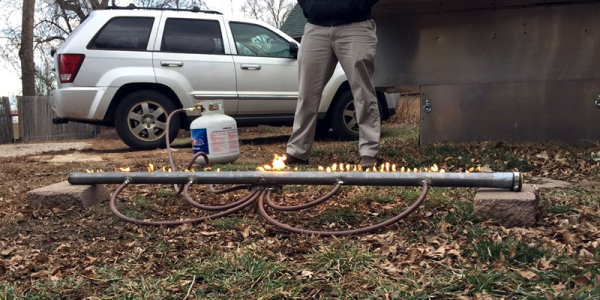We’re pretty sure all the hackers and tinkerers and makers out there were a tiny bit of a pyromaniac in their youth. That’s what makes this week’s Hack Chat so exciting: we’re talking about Hacking With Fire.
Our guest for this week’s Hack Chat will be [Brice Farrell], who, like most of us, has been interested in fire his entire life. He’s taken this interest and turned his amateur passion into something semi-professional. He’s a PGI certified pyrotechnician, an electrical engineer, and an ice carver. This year, he appeared on BattleBots where he built the flame system for Battle Royale with Cheese.
 Given [Brice]’s extensive expertise, this Hack Chat is going to cover the relevant safety concerns of work with fire, how to keep yourself safe, and how to do everything legally. We’ll be talking about fireball shooters of all sizes, ignition techniques, and the use (and introduction) of fire in combat robotics. That last point is extremely interesting: is fire on a BattleBot actually useful, and what can you do to protect your bot from it?
Given [Brice]’s extensive expertise, this Hack Chat is going to cover the relevant safety concerns of work with fire, how to keep yourself safe, and how to do everything legally. We’ll be talking about fireball shooters of all sizes, ignition techniques, and the use (and introduction) of fire in combat robotics. That last point is extremely interesting: is fire on a BattleBot actually useful, and what can you do to protect your bot from it?
Points of interest for this Hack Chat will include:
- Fire safety
- The difference between generating flames and fireballs
- Ignition techniques
- Fire safety
- Fire in combat robotics
- Fire safety
You are, of course, encouraged to add your own questions to the discussion. You can do that by leaving a comment on the Hacking with Fire event page and we’ll put that in the queue for the Hack Chat discussion.

Our Hack Chats are live community events on the Hackaday.io Hack Chat group messaging. This week is just like any other, and we’ll be gathering ’round our video terminals at noon, Pacific, on Friday, September 14th. That’s not the same in every time zone, but don’t worry, we have some amazing time conversion technology.
Click that speech bubble to the right, and you’ll be taken directly to the Hack Chat group on Hackaday.io.
You don’t have to wait until Friday; join whenever you want and you can see what the community is talking about.






















